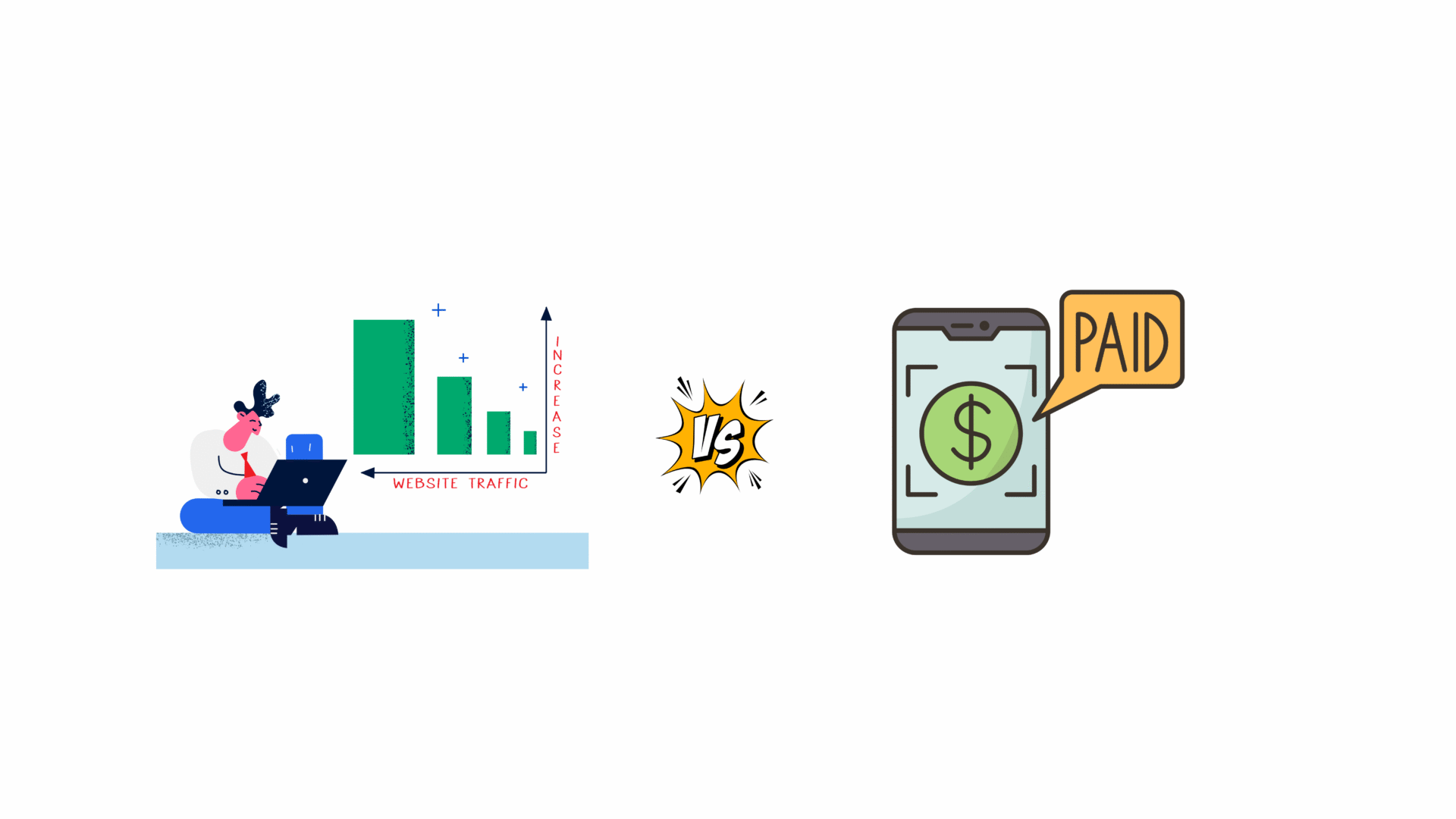In the digital-first economy of 2025, a landing page is the ultimate intersection of brand strategy and customer action.
It’s where every dollar spent on ads and SEO proves its worth—or doesn’t.
The strategic conversation among marketers has evolved.
The old question of “Do we optimize for SEO or for conversions?” has been replaced by a new mandate: “How do we master both?”
Leading brands now understand that a landing page must be both a powerful, persuasive sales tool and a valuable, discoverable asset that builds long-term authority.
Achieving this dual objective is a true test of digital marketing expertise.
To find the most effective and actionable tips, the BoostMyDomain team consulted a panel of experts who are at the forefront of global digital growth.
We asked them for their best advice:
“What’s your go-to tip to leverage the power of landing page content to maximize conversions and SEO performance?”
Their insights provide a tactical blueprint for any business looking to master the art and science of the high-performance landing page.
Read on!
Make Landing Pages Feel Like Conversations
Treat your landing page like a conversation, not a showroom. One of our go-to strategies at Social Sellinator is ‘Search-to-Intent Alignment’ where the copy flow mirrors the emotional state of the searcher. For example, we restructured a legal service client’s landing pages around the questions users asked right before they clicked: ‘Do I have a case?’ and ‘How long will this take?’
By rewriting subheaders to answer those exact concerns and adding a short interactive checklist above the fold, we increased their organic conversion rate by 25% and cut bounce rates in half. SEO isn’t just about visibility, it’s about earning the second click. The real win comes when your content feels like it’s reading the user’s mind.

Digital Marketing Strategist, SocialSellinator
Do One Job Exceptionally Well
My go-to tip? Nail the intent and make the page do one job really well. Too many landing pages try to be everything to everyone. The best-performing ones are focused, fast and speak directly to what the visitor came looking for.
From an SEO angle, we always start with a clear primary keyword, but we don’t stop there. We build in related phrases, questions, and real user language to help the page rank for a wider range of searches. But we never let the content become bloated. It still has to convert.
For conversions, we keep things tight. One message. One goal. Clear CTA above the fold. Fast load. No distractions. We also test variations constantly. Small tweaks in copy or layout can move the needle more than you’d expect.
Treat your landing page like a pitch not a brochure. You’re not here to inform, you’re here to convert. Do that well, and the rankings will follow.

CEO, Webheads
Write for Humans First, Search Engines Second
My go-to tip is to “write for humans first, search engines second” but do both intentionally.
What’s worked best for us is making sure the landing page answers the visitor’s questions right away. Clear headline, benefits up front, and a strong call to action. At the same time, we naturally weave in the keywords people are actually searching for—not stuffing them, just using them where they make sense.
We also include things like testimonials, FAQs, and even short videos when we can. That not only helps with conversions but also keeps people on the page longer, which Google seems to like.
Bottom line: the page needs to be helpful, trustworthy, and easy to read. If people feel like they’ve found what they’re looking for, the SEO and conversions tend to follow.

Owner, WeBuyHousesQuick
Target Specific Pain Points With Value Propositions
Having worked with thousands of eCommerce brands through Fulfill.com, I’ve seen firsthand how crucial landing page optimization is for driving both conversions and SEO performance. My go-to tip is simple but powerful: create landing pages that speak directly to specific pain points with crystal-clear value propositions.
In the logistics world, we learned this lesson the hard way. When we first launched our 3PL matching service, our landing pages were too generalized. We talked broadly about “fulfillment solutions” without addressing the specific challenges our different customer segments faced. Conversion rates were mediocre at best.
The game-changer came when we restructured our landing pages to target distinct pain points: one for brands struggling with inventory management, another for those facing excessive shipping costs, and yet another for businesses expanding into new geographic markets. Each page featured industry-specific terminology, relevant case studies, and clear CTAs tailored to that particular challenge.
The results were dramatic – our conversion rates jumped by over 40%, and our organic traffic improved as search engines recognized the highly relevant content addressing specific user queries.
For maximum impact, I recommend:
Build landing pages around long-tail keywords that signal high purchase intent within your niche
Feature social proof specific to the pain point (testimonials from similar businesses)
Incorporate schema markup to help search engines understand your content
Ensure your value proposition is immediately visible above the fold
Optimize page load speed (we saw a 15% conversion drop for every second of delay)
The most successful eCommerce brands we work with don’t try to make one landing page serve all purposes. They create dedicated pages for different traffic sources, product categories, and customer segments – each optimized for both the search intent and the conversion goal.
Remember, in eCommerce, your landing page isn’t just a digital brochure – it’s often your only chance to convince a potential customer that you understand their specific needs better than competitors. Make every word and element count.

Joe Spisak
CEO, Fulfill.com
Structure Content Around Visitor Intent
Focus on intent-first structure. Most landing pages waste time selling before understanding what the visitor came to do. Strip it down. Start with a clear headline tied to a specific search or action. Then follow with a single CTA that repeats across the page. Don’t add anything that pulls attention elsewhere. Clean content wins because it’s faster to scan, easier to index, and aligns with buyer behavior.
Next, match content blocks to high-value keywords with strong intent. Use natural phrasing, not keyword stuffing. Add schema where it makes sense, like FAQs or reviews, to give Google more structured data. For example, a page promoting a phone buyback program should answer “How much can I get for my iPhone 13?” in the body copy. Make it easy for both users and crawlers to get the answer fast.
Track engagement. Heatmaps, scroll depth, and bounce rates reveal what to trim or move. At EcoATM, we tested variations that led with value-first messaging like “Instant cash for your used phone” instead of generic slogans. Conversions jumped because we met user intent right away. Keep testing layout, CTA copy, and supporting content. If it doesn’t guide the next action or improve relevance, remove it.
Build Layered Resources That Match Search Intent
The most effective way to maximize both conversions and SEO with landing page content is to stop thinking of the page as a one-dimensional pitch. Instead, treat it like a layered resource that matches what people are actually searching for, both in intent and in depth.
Start by identifying transactional search queries tied to your offer. Then build out the page with modular content blocks that address different stages of decision-making. Include quick comparisons, real-world examples, objection-handling sections, and internal links to deeper content. This kind of structure signals relevance to search engines and builds trust with people before asking them to take action.
It helps to blend a product page with the clarity of a blog post. So if someone is searching “best CRM for agencies,” listing features and dropping a CTA isn’t enough. Break down how it compares to alternatives. Show how an agency actually uses it. Surface common concerns with honest answers. That kind of content reduces friction because it gives people what they need to move forward.
Keep the content fresh. Every few months, revisit the page and test small updates like headline variations or shifting where CTAs appear. These changes can improve engagement metrics because they influence both search performance and conversion rates. Word count doesn’t matter as much as clarity. If someone has to pause to figure something out, that’s a lost opportunity.
Most landing pages either go all in on design or keyword stuffing. So the real wins come when the page feels like it was built for someone who’s scanning fast, comparing hard, and ready to act once they feel understood. Build for that mindset because when you do, everything else like rankings, CPC efficiency, and conversions starts to improve.

Fractional CMO, JRR Marketing
Turn Landing Pages Into Conversations
One trick I swear by? Turn your landing page into a conversation, not a brochure. Use the exact words your audience types into search, pull from reviews, search console data, even Reddit. Don’t just write about their problem, sound like you’re in it with them.
I once swapped “affordable gearboxes” with “cheap gearbox fix near me” on a service page. Conversions jumped 34% overnight. Why? Because that’s what real people say.
Structure matters too. Lead with the pain point, then layer in proof, social proof, outcomes, stats. And for SEO? Nail one main topic per page. Sprinkle related terms where they fit naturally, like seasoning, not stuffing.
Finally, keep the CTA visible but not pushy. Think: helpful friend, not hard sell. Your landing page should guide like a GPS, not bark like a drill sergeant.
It’s not rocket science, it’s empathy, clarity, and real-world language.

SEO Consultant, Mike Khorev
Cut Everything Except the Pain
Cut everything except the pain. That is the rule I live by when building landing pages. We tried video intros, carousels, social proof bars, and listicles. Pages looked slick, metrics looked soft. Then I deleted everything but a headline, two symptom blurbs, and one photo showing visible damage. We got more emails in three days than the whole month prior. That’s when we learned: clarity scales better than persuasion.
Too many people write to inform. I write to interrupt. The only question I answer is, “Do you feel this pain right now?” Everything else is noise until that’s a yes. We use phrases like “chronic sneezing near AC vents” or “damp floors in late July.” If that lands, they scroll. If not, they leave. But when it works, they book without hesitation. Copywriters hate it. Conversion charts love it.
Managing Director, Mold Removal Port St. Lucie
Use Dual-Intent Design for SEO and Conversions
Use a Dual-Intent Design: Align Conversion Goals + Search Intent
Why it works:
Landing pages often don’t work because they are going too specific—one too far on sales (but not on rank), the other too far on search engine (but not on convert). Great landing pages do both by merging:
– SEO-packed, intent-alignment copy for visibility and traffic
– Conversion-optimized elements for clarity and action
How to do it:
1. Begin with a Solid, Conversion-Focused Hero Section
– Plain headline that speaks directly to user pain/goal
– Secondary headline with your value proposition
– Above-the-fold main CTA
2. Follow with Intent-Driven Content Driven by Keywords
– Use H2s that reflect common search queries (e.g., “How does [Product] work?”, “Why choose [Brand]*”)
– Provide brief answer in natural language with bullets, and schema markup
– This improves SEO and builds trust with mid-funnel readers
3. Include Social Proof + Trust Signals
– Testimonials, logos, case studies
– Star ratings or press coverage—both help conversion and decrease bounce
4. Utilize Internal Linking + FAQ for SEO Depth
– A concise FAQ section towards the end targeting “People Also Ask” queries
– Internal link to inner product or blog pages to aid in engagement and crawlability
5. End with a CTA that Resonates with the User Journey Stage
– If top-of-funnel: “See a demo” or “Download guide”
– If bottom-of-funnel: “Start your free trial” or “Book a call”

CEO, BoostVision
On behalf of the BoostMyDomain community of readers, we thank these leaders and experts for taking the time to share valuable insights that stem from years of experience and in-depth expertise in their respective niches.
BoostMyDomain invites you to share your insights and contribute to our authoritative publication. Reach a wider audience, build your credibility, and establish yourself as a thought leader in an industry that caters to every business with an online presence!
